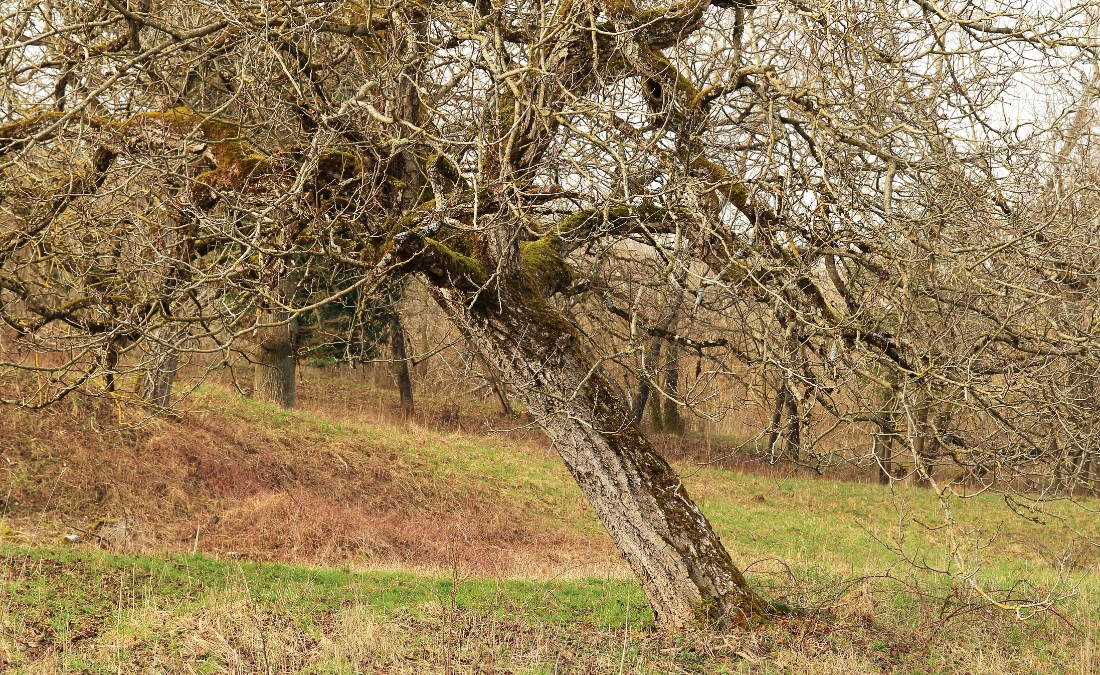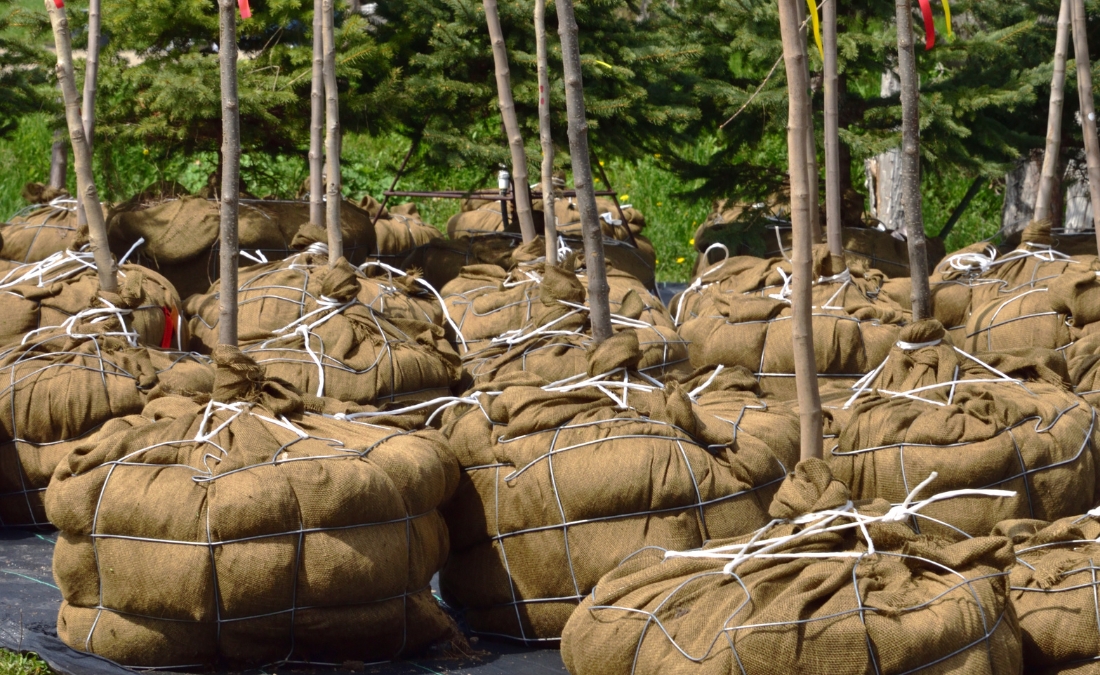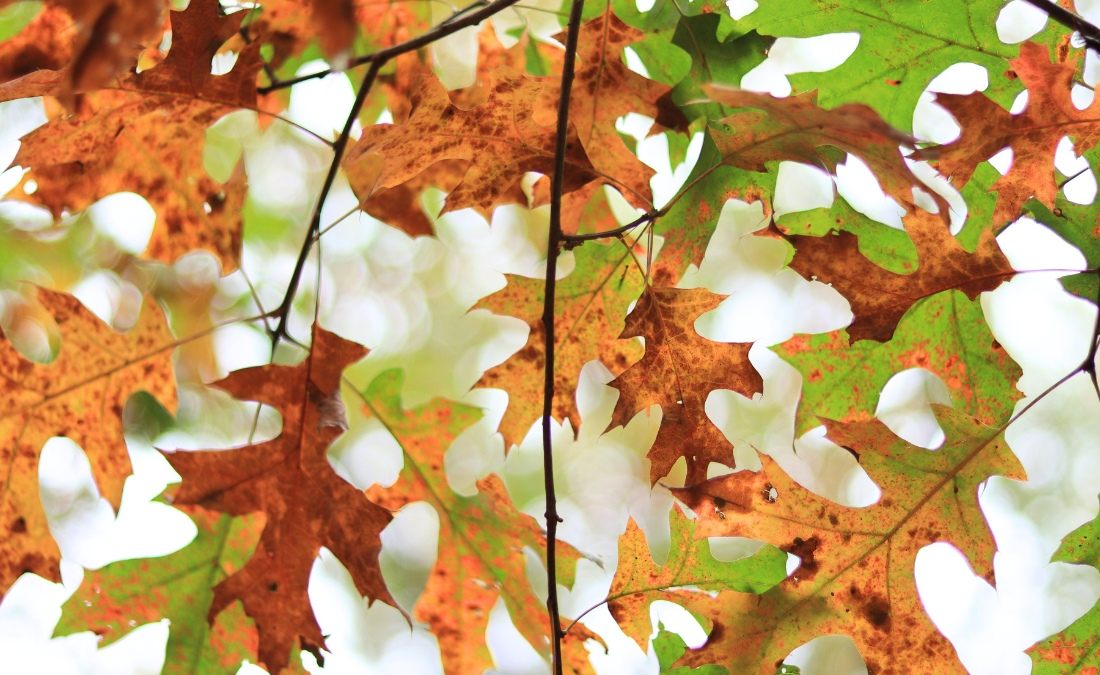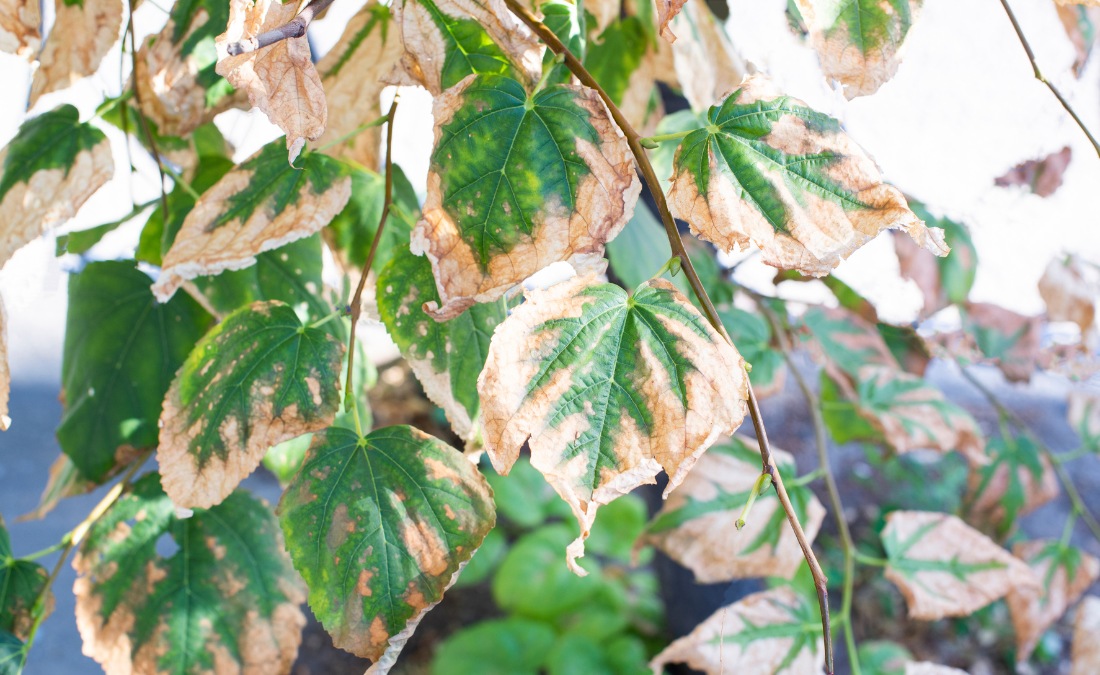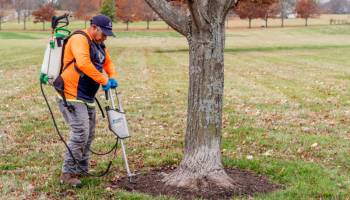5 Types of Tree Damage in Cedar Rapids That Require Professional Help
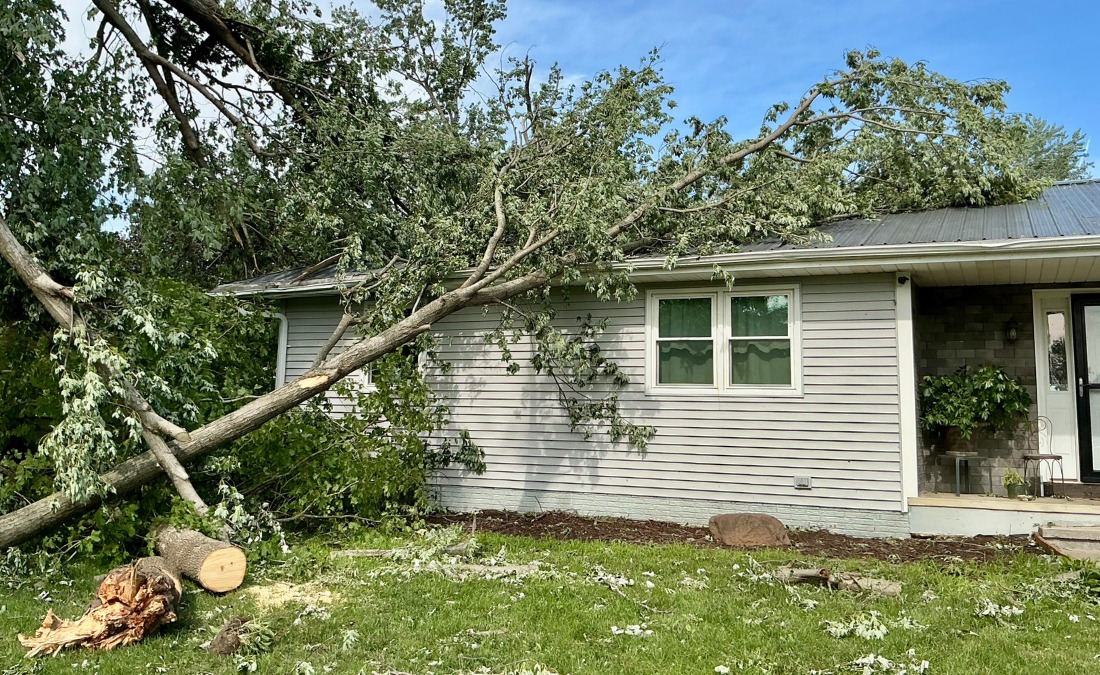
From pests to storm damage, learn 5 types of tree damage that demand expert care to protect your trees, property, and safety before it’s too late.
That beautiful oak shading your Cedar Rapids home could be silently declining. Your maple in Marion might be fighting a losing battle against drought stress. And that ash tree you’ve grown to love? It could be harboring destructive pests right now. Trees rarely announce their problems with obvious distress signals – instead, they send subtle warnings that many homeowners miss until it’s too late. Recognizing the signs your tree needs professional help can mean the difference between saving a treasured tree and watching it become a costly emergency removal.
Key Takeaways
- Early drought stress symptoms like leaf scorch and wilting indicate your Cedar Rapids trees need professional watering guidance and health assessment.
- Disease and pest problems, especially emerald ash borer in ash trees, require immediate professional diagnosis and treatment to prevent tree loss.
- Structural issues, including cracks, splits, and weak branch attachments, pose safety risks that only Certified Arborists should address.
- Trees showing delayed symptoms from past storm damage may need professional support systems to prevent future failure during Iowa storms.
- When DIY treatments fail to improve tree health, professional plant health care can save trees that might otherwise need removal.
1. Visible Tree Health Problems
The most obvious indicator that your tree needs professional attention is when it simply doesn’t look healthy. In Cedar Rapids, tree health problems often develop gradually, making them easy to overlook until they become serious.
Drought stress has become increasingly common in Eastern Iowa, affecting trees throughout Marion, Cedar Rapids, and Iowa City, with older white oaks and silver maples particularly vulnerable.
Watch for these visible health problems:
- Leaf Scorch and Browning: Leaves developing brown, crispy edges, especially during hot summer months.
- Premature Leaf Drop: Trees losing leaves in summer or early fall, outside their normal seasonal timing.
- Wilting Despite Adequate Soil Moisture: Leaves drooping even when the ground isn’t dry.
- Reduced Leaf Size: New leaves growing smaller than usual as trees conserve energy.
- Off-Color Foliage: Leaves appearing yellow, pale green, or having unusual color patterns.
These symptoms often indicate that your tree’s root system is struggling to supply adequate water and nutrients to the canopy. During prolonged drought stress, many tree species trigger an interesting survival mechanism: excessive seed production.
So, if you notice significantly more helicopters, acorns, or other seeds dropping from your trees than usual this summer, it’s often a clear indicator that your trees are under severe stress and need professional assessment to determine the best recovery approach.
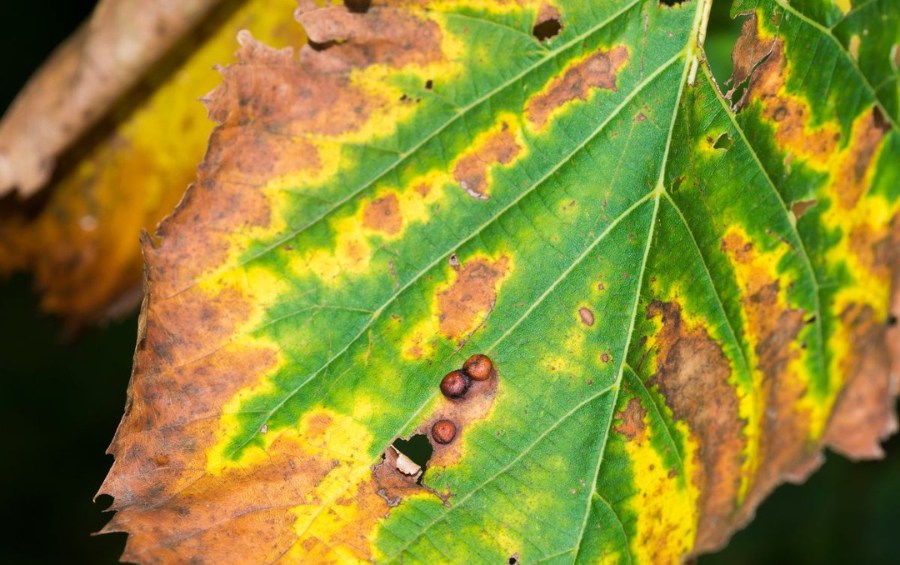
2. Pest and Disease Damage
Disease and pest issues are among the most serious threats facing Cedar Rapids trees, and early detection is critical for successful treatment. Iowa faces particular challenges from invasive pests like the emerald ash borer. As of October of 2024, this beetle was confirmed in all 99 Iowa counties, solidifying its prevalence and continuing to slowly attack ash trees throughout the region.
Emerald Ash Borer (EAB) Warning Signs
If you have ash trees on your property in Cedar Rapids, Hiawatha, or surrounding areas, watch for these critical symptoms:
- D-Shaped Exit Holes: Small, distinctive holes about 1/8 inch wide in the bark.
- Canopy Thinning and Dieback: Starting in the upper third of the tree and progressing downward.
- Epicormic Sprouting: New shoots growing from the trunk or main branches.
- S-Shaped Galleries: Visible under loose bark, created by larval feeding.
- Increased Woodpecker Activity: Birds feeding on larvae beneath the bark.
Oak Wilt Symptoms
Oak wilt, a fungal disease carried by sap-feeding beetles, poses another serious threat to Iowa trees, particularly red oak species. Symptoms typically begin with a subtle off-green color shift in the upper portion of affected trees. Look for:
- Rapid Wilting: Leaves wilting quickly from the crown downward.
- Bronze-Colored Leaves: Foliage taking on a bronzed appearance.
- Defoliation: Leaves dropping while still attached to twigs.
Symptoms of Other Common Iowa Tree Pests and Disease
Additional pest and disease problems affecting Cedar Rapids area trees include:
- Two-Lined Chestnut Borer: D-shaped exit holes, bark splitting, and progressive branch dying on stressed oaks.
- Dutch Elm Disease: “Flagging” where entire branches turn yellow and brown, rapid tree decline, and brown streaking in wood.
- Anthracnose: Irregular brown leaf spots following veins, early leaf drop, and twig dieback from tips.
- Scale Insects: Yellowing foliage, sticky honeydew on leaves, and black sooty mold growth on affected surfaces.
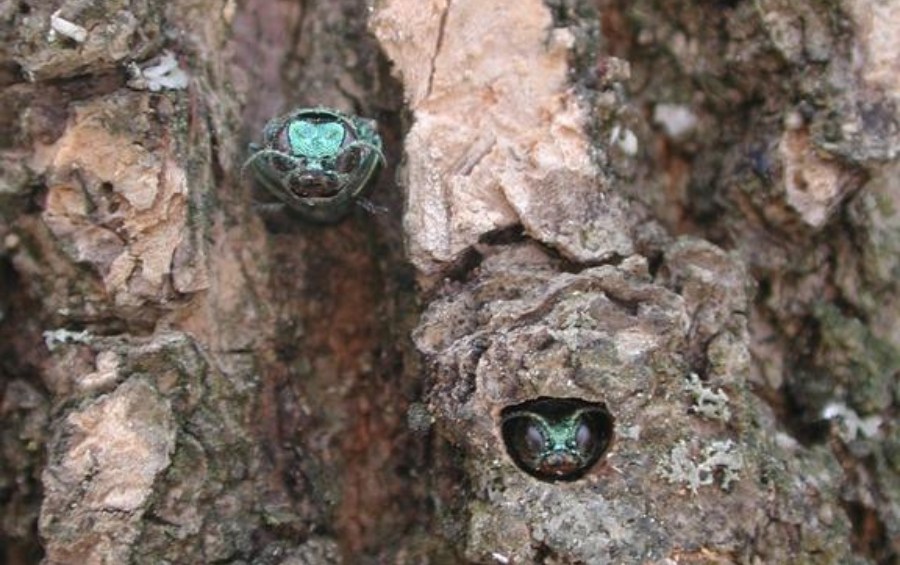
Emerald ash borers emerging from exit holes in damaged tree bark in Cedar Rapids, Iowa. Photo courtesy of Debbie Miller, USDA Forest Service, Bugwood.org
EXPERT TIP: Never wait to address pest or disease symptoms – especially if you suspect EAB or oak wilt; these diseases and pests can kill trees within 2-4 years if left untreated. Regardless of the specific pest/disease, however, early professional intervention can often save trees that would otherwise be lost, and it’s always more cost-effective than emergency removal.
3. Structural Weakness
Structural problems represent some of the most dangerous tree issues Cedar Rapids homeowners can face. These problems often develop slowly over years, but they can lead to sudden tree failure during storms, putting your family and property at risk.
Iowa’s weather patterns, including severe thunderstorms, ice storms, and strong winds, put extra stress on trees with structural weaknesses. Following the 2020 derecho that destroyed 65% of Cedar Rapids’ tree canopy, property owners have become more aware of the importance of identifying and addressing structural problems before they become emergencies.
Critical Structural Warning Signs
- Visible Cracks in Trunk or Major Branches: Any crack longer than a few inches requires professional assessment.
- V-Shaped Branch Unions: Where two branches meet at sharp angles, creating weak attachment points.
- Co-Dominant Stems: Two or more trunks growing together without proper attachment.
- Leaning Trees: Especially if the lean has developed recently or worsened after storms.
- Exposed Roots: Root systems lifting out of the ground, compromising stability.
- Dead or Broken Branches: Large dead limbs hanging in the canopy.
Many structural problems can be addressed through professional cabling and bracing systems rather than tree removal. Our Certified Arborists use ANSI A300 standard hardware in triangle or box configurations to provide reliable support that can extend a tree’s life by 15-20 years while keeping your property safe.
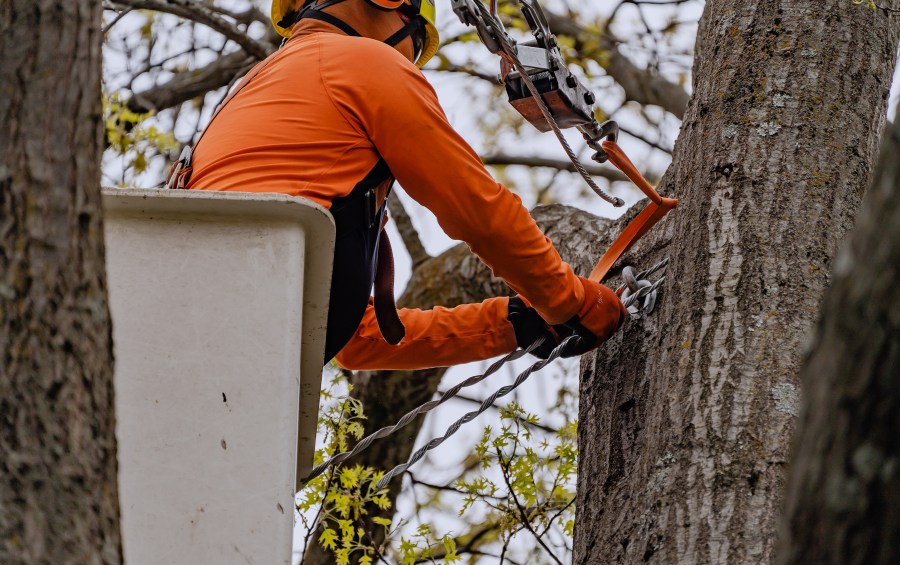
4. Lingering Storm Damage
Even years after storm events, trees may continue showing delayed symptoms from damage. This is particularly relevant for Cedar Rapids area residents, as many trees are still recovering from various weather events over recent years.
Storm damage doesn’t always appear immediately. Trees can seem fine after a storm but develop problems months or even years later as secondary stress weakens their defenses. Watch for these delayed symptoms:
- Branch Dieback: Branches that survived the storm beginning to die back.
- Pest Susceptibility: Previously healthy trees becoming infested with insects or diseases.
- Soil Heaving: Ground around the tree base lifting, cracking, or showing unusual mounding that indicates root system damage from wind torque or soil saturation during the storm.
- Gradual Leaning: Trees developing a lean months after a storm as damaged roots fail to provide adequate support.
- Declining Vigor: Reduced leaf size, sparse foliage, or slower growth indicating compromised root function.
- Bark Splitting: New cracks or splits appearing in bark, often during freeze-thaw cycles.
“We often see storm-damaged trees that look fine initially but develop serious problems 2-3 years later,” explains Jerry Sheese, Branch Manager at Arbor Masters Cedar Rapids. “Regular professional assessments can identify these developing issues before they become dangerous or require tree removal.”
Professional Cedar Rapids arborists can evaluate whether storm-damaged trees need support systems, targeted pruning, or other treatments to help them recover fully. This proactive approach often saves trees that might otherwise decline and need removal.
5. Failed DIY Fixes
Cedar Rapids homeowners often try to address tree problems themselves, and while basic care like watering and mulching can certainly help, they don’t fix everything. So, when your DIY efforts aren’t producing results – or you simply don’t know what’s wrong or how to fix it – it’s time to call in professional expertise.
When to Stop DIY and Call Professionals
- Persistent Health Problems: Tree conditions that don’t improve with basic care.
- Safety Concerns: Any work requiring ladders, chainsaws, or working near power lines.
- Large Tree Pruning: Removing branches over 2 inches in diameter or working above ground level.
- Disease Diagnosis: Symptoms that could indicate serious diseases requiring laboratory confirmation.
- Chemical Treatments: Pesticide or fungicide applications that require specialized equipment or licensing.
Professional plant health care services can diagnose problems accurately and provide targeted treatments that homeowners can’t access or safely apply. This includes systemic treatments for emerald ash borer, root zone treatments for compacted soils, and specialized fertilization programs.
IMPORTANT NOTE: Attempting tree work beyond your skill level isn’t just ineffective, it can be dangerous. Professional arborists have the training, equipment, and insurance to handle complex tree problems safely to help preserve your tree’s longevity and keep your property as safe as possible.
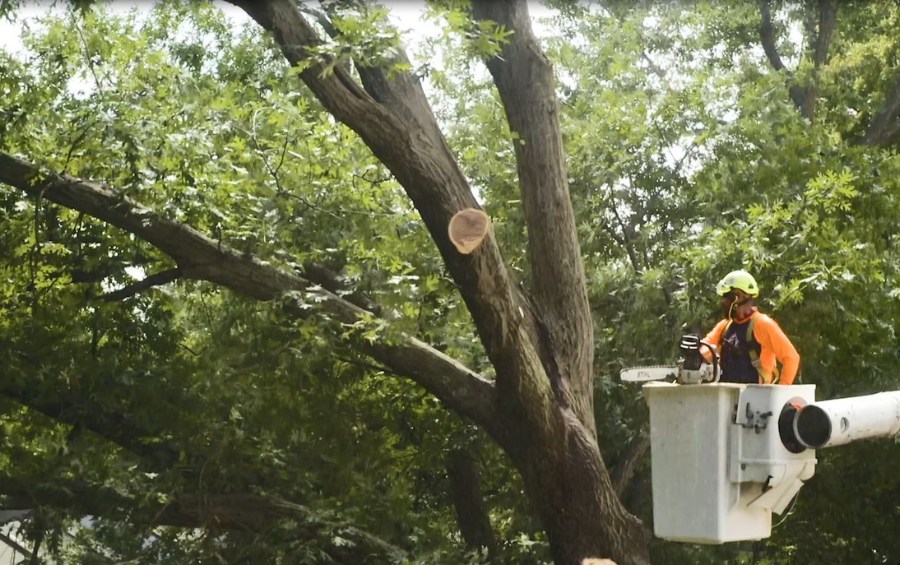
Frequently Asked Questions
How often should I have my Cedar Rapids trees professionally inspected?
Healthy mature trees should be assessed by an ISA Certified Arborist every 2-3 years, while younger trees (under 10 years) benefit from annual inspections during their establishment period. Trees showing any signs of stress, pest activity, or structural concerns should be evaluated immediately. Properties with ash trees should have annual EAB monitoring, and trees near structures or high-traffic areas warrant more frequent professional assessment for safety.
Can weather conditions affect when I should call for tree help?
Absolutely. Iowa’s extreme weather patterns often trigger tree problems that require professional attention:
- Immediate Response Needed: Call right away after severe storms, ice events, or high winds for safety assessment and hazard removal.
- Drought Periods: Trees may need professional watering strategies, stress evaluation, and targeted treatments to prevent long-term damage.
- Spring Season: Ideal timing for preventive treatments, pest management programs, and health assessments before stress periods begin.
- Late Fall Through Winter: Perfect for structural work, cabling and bracing installation, and dormant season pruning when trees experience less stress.
When is the best time to have trees professionally assessed in Iowa?
Late winter to early spring (February-April) is ideal for comprehensive tree assessments before the growing season begins. However, if you notice concerning symptoms, like pest activity, structural problems, or health decline, don’t wait – schedule an assessment immediately, regardless of season.
Can tree problems spread to other trees on my property?
Many tree problems can absolutely spread to nearby trees, making early professional intervention crucial.
- Oak Wilt: Spreads through root grafts between trees and insect vectors, potentially killing entire groves.
- Dutch Elm Disease: Moves between elms through bark beetles and root connections.
- Stress-Related Issues: Conditions like drought damage can make neighboring trees more susceptible to pests and diseases.
Professional Marion arborists can identify which problems pose spreading risks and implement containment strategies to protect your other trees.
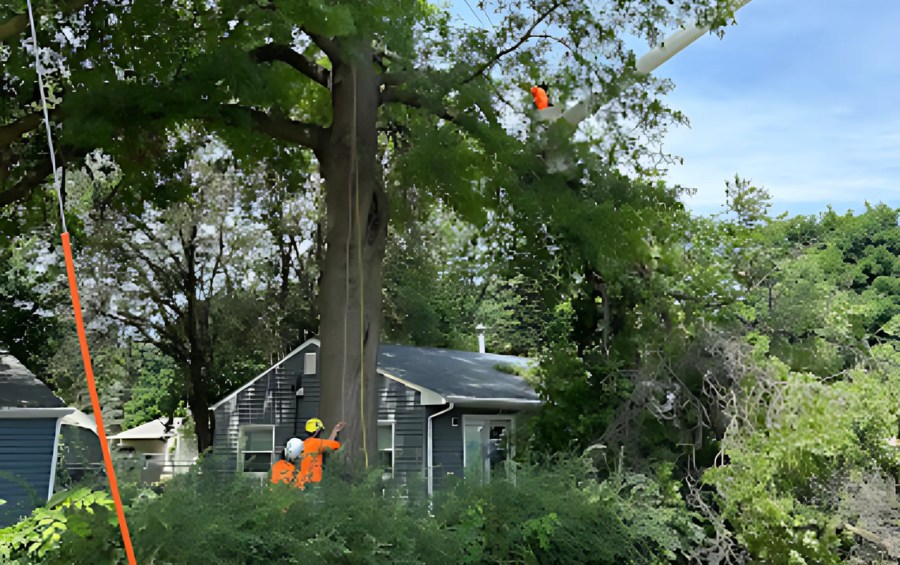
Don’t Wait for Emergencies, Get Professional Tree Care from Arbor Masters Today!
Your trees are valuable investments in your property’s beauty, environmental health, and market value. So, when you notice signs that your trees need professional help, early action saves both money and your luscious landscape.
Whether you’re dealing with drought stress, pest problems, structural concerns, or ineffective DIY treatments, the ISA Certified Arborists at Arbor Masters have the expertise to diagnose problems accurately and provide effective solutions.
Contact us today at 319-359-6135 for a professional tree assessment, or request an estimate online.
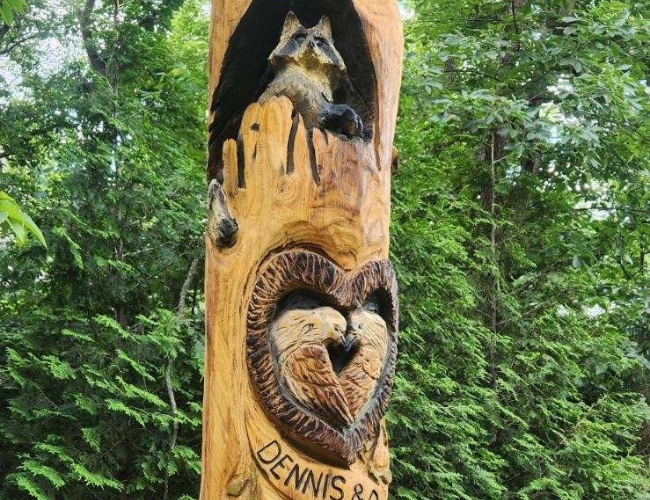
Get the latest local news, tree care tips, special offers, and company updates directly to your inbox! It's easy to subscribe and there's no spam - we promise.
"*" indicates required fields

